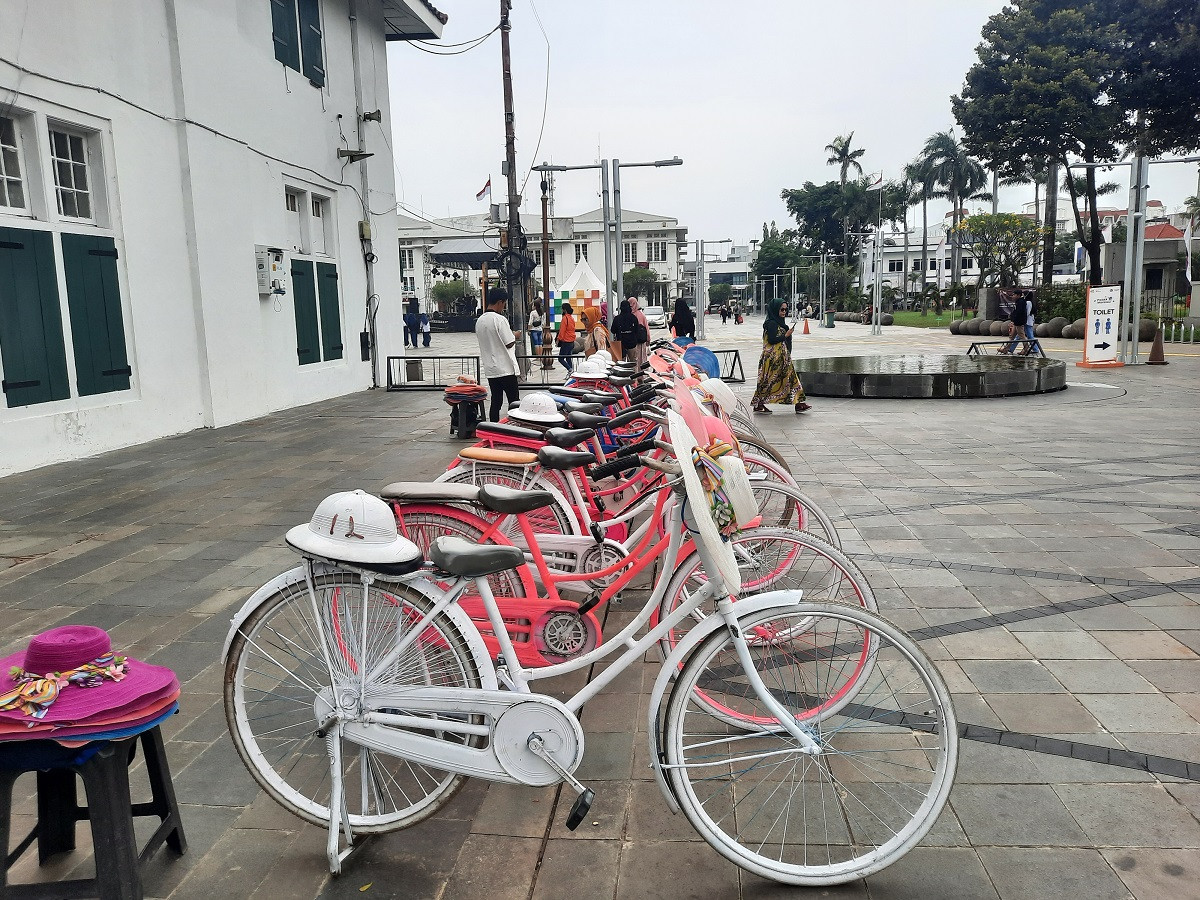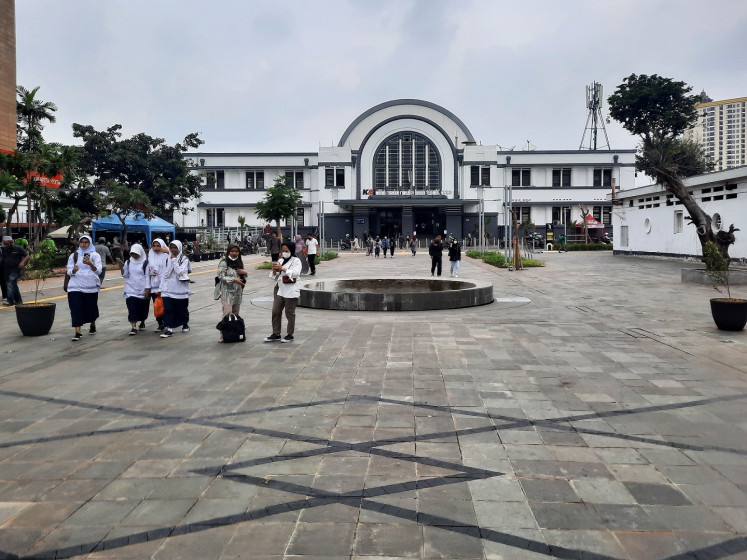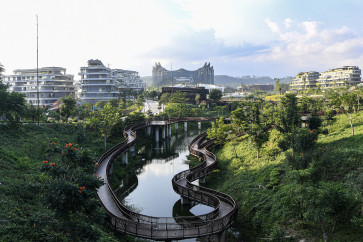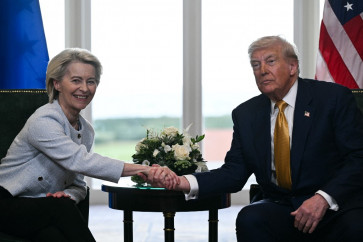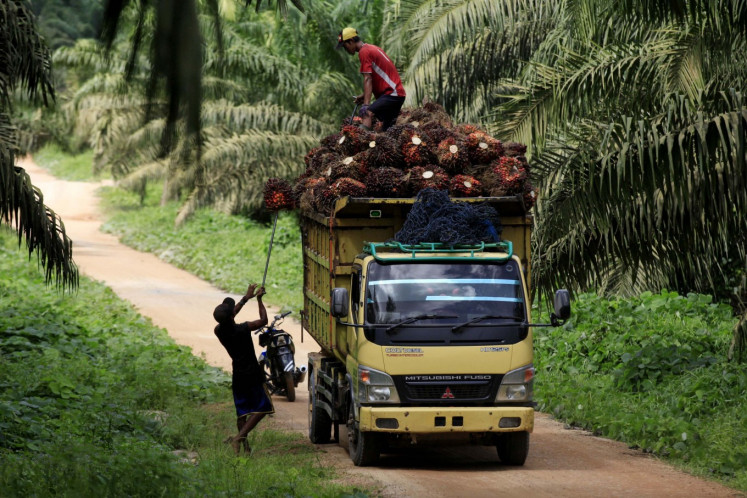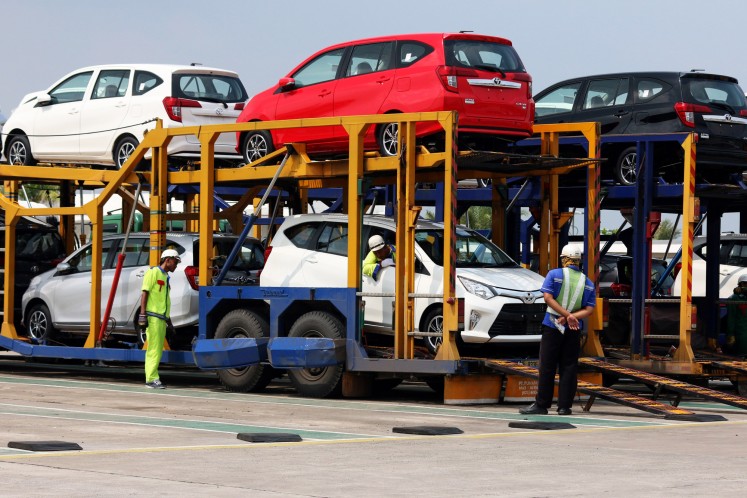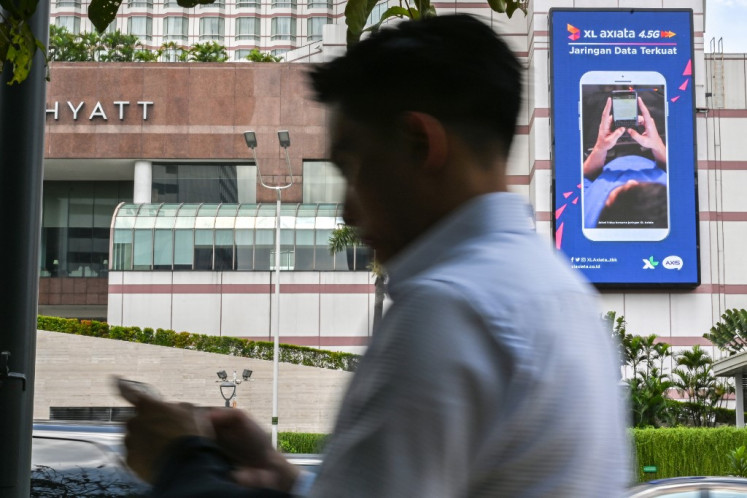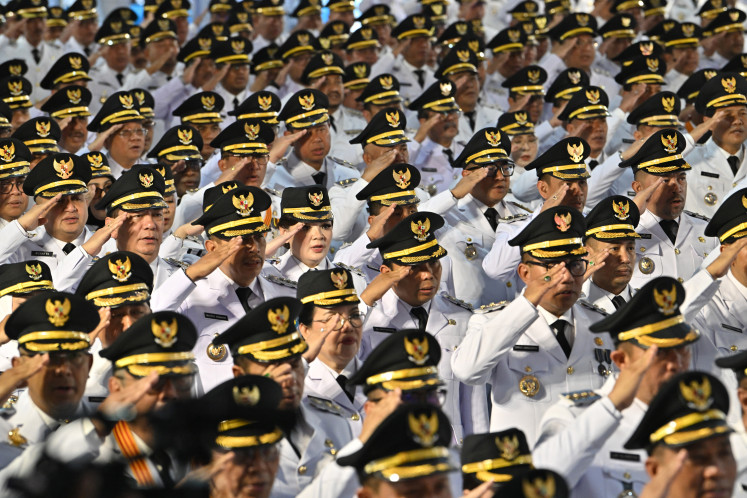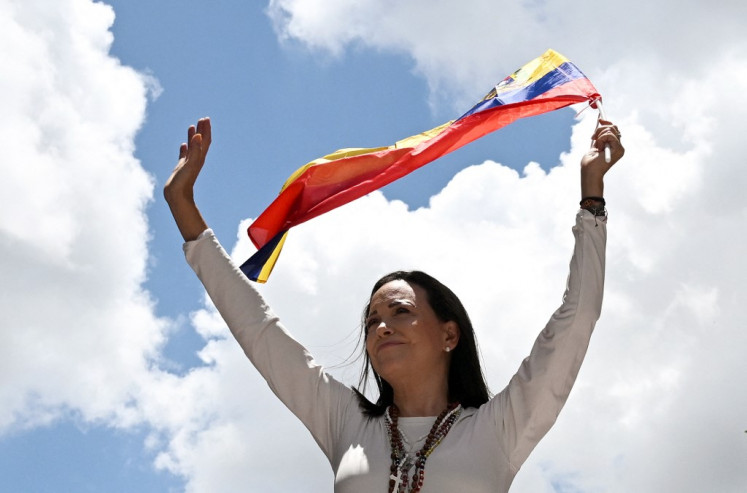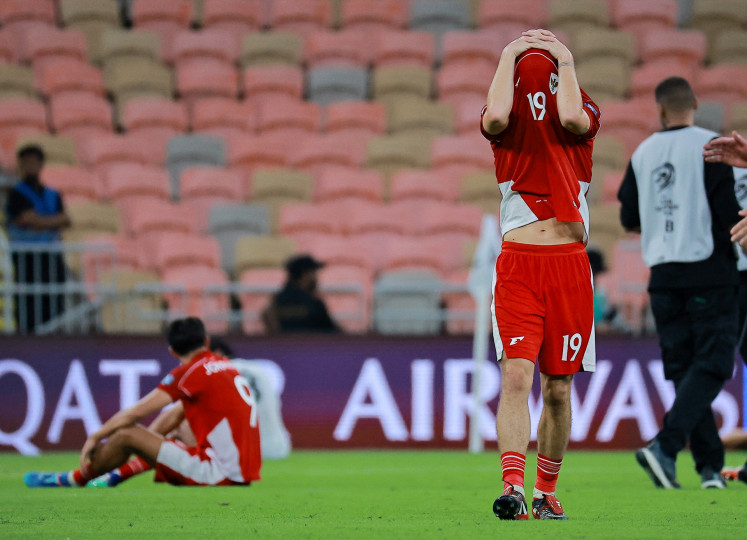Popular Reads
Top Results
Can't find what you're looking for?
View all search resultsPopular Reads
Top Results
Can't find what you're looking for?
View all search resultsRevitalized Kota Tua offers respite for pedestrians
The newly revamped Kota Tua area in West Jakarta offers a glimpse at the future, with pedestrian-friendly infrastructure offering a lull in the fast-paced, noisy and traffic-filled city.
Change text size
Gift Premium Articles
to Anyone
D
uring a cloudy afternoon on Friday, Lisda spoke to The Jakarta Post while keeping watch over her students at Fatahillah Square in Kota Tua, or Old Town, in West Jakarta.
The 50-year-old elementary school teacher had brought her students and their parents on a school field trip to the newly revamped historical area, which was once the city center of Batavia, Jakarta’s name during the Dutch colonial era.
Lisda and her group had chosen the Kota Tua area for the school field trip, as it was affordable and also had several museums they could visit.
“Kota Tua is one of the closest places we can visit from the city. The square is also a historical part of Jakarta,” Lisda said.
Earlier in the day, she and several dozen students and parents arrived in Kota Tua from Kemanggisan, also in West Jakarta. The mikrolet (minivan) they rented for the trip had dropped them off in front of the Bank Mandiri Museum, from where they had walked to Fatahillah Square.
Lisda said the latest renovations to Kota Tua had made the area more comfortable and much safer, especially for large groups of children, adding that she would love more areas in the capital to be developed like Kota Tua, with a focus on pedestrians.
“It’s safer this way and we don’t have to be afraid of being hit by motorized vehicles when walking,” she said.
Future vision
Last February, the Jakarta administration designated Kota Tua as the pilot project for developing a “low emission zone” in Jakarta in a bid to improve air quality.
The plan includes revitalizing the historical area by constructing up to 29,000 square meters of pedestrian facilities, especially on Jl. Lada and Jl. Kemukus, and around the Kali Besar promenade, as well as other strategic spots.
Among the pedestrian facilities under construction in Kota Tua include the facility at Plaza Transit BEOS in front of the Jakarta Kota train station.
Construction has finished on Jl. Lada and Jl. Ketumbar, which used to be ordinary asphalt roads, where one former junction has been transformed into a plaza with paving blocks that is primarily for pedestrian use. Meanwhile, Jl. Pintu Besar Utara, Jl. Kemukus and Jl. Lada Dalam have been converted into pedestrian-priority streets with just a single lane for motorized vehicles.
Visitors and commuters walk around the Lada Plaza in front of the Jakarta Kota Station on Sept. 9, 2022. The plaza used to be ordinary asphalt roads filled with motorized vehicles passing by. (JP/A. Muh. Ibnu Aqil)Also on Friday, Sutikno was waiting for customers near a fountain in the new plaza on Jl. Lada and Jl. Ketumbar, offering sun hats as well as white and pink onthel (Dutch-era roadsters) for rent. The bicycles start at Rp 20,000 (US$1.35) for 30 minutes.
The 37-year-old vendor said that during the outset of the COVID-19pandemic, he had had to find another job because public spaces were temporarily closed as part of the public activities restrictions. When Kota Tua reopened, it was only for limited hours from 8 a.m. to 5 p.m., so there were very few customers.
Sutikno said that he expected the easing of coronavirus-related restrictions and the Kota Tua revitalization project to bring more customers to his bicycle-renting business.
“I think this kind of concept [for Kota Tua] is much better than before,” he noted.
For all people
Jakarta Governor Anies Baswedan told the Post during an exclusive interview on Friday that he had aimed to bring Jakarta’s heterogeneous population together by creating and expanding public spaces and mobility in the city during his five-year tenure.
“Parks, sidewalks, public libraries and public transportation are places where different people mix together. These places bring a sense of equality and togetherness for all Jakartans, regardless of their religion or social status,” Anies said.
Her Pramtama, a member of the Jakarta Governor’s Team for Accelerated Development (TGUPP), said that Kota Tua was a model for a future Jakarta and that it would not be just a tourist attraction like it was at present. Instead, it would be developed into a hub for public and economic activities that was integrated with nearby residential areas and the public transit system.
“We want Kota Tua to become a lively area with [many] people,” Pramtama said on Tuesday, during an online discussion hosted by the Institute for Transportation and Development Policy (ITDP) Indonesia.
However, Vidya Tanny of the Rujak Center of Urban Studies said that if the city administration wanted to provide active public spaces through areas like Kota Tua, these should not become an exclusive space and must be able to accommodate all classes of society.
“This perspective should not be reserved only for visitors [to such areas], but should include everyone who conducts economic activities there, regardless of whether they are in the formal sector,” Vidya told the ITDP Indonesia discussion.
Kota Tua was synonymous with street vendors who supported the area as a tourist attraction. “But these vendors are usually chased out of the area every time a previous governor made an effort to try and revitalize Kota Tua,” she added.

